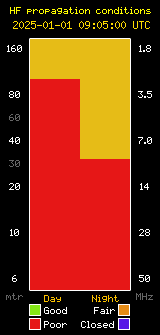Last Thursday’s Technical Mentoring and Elmering Net proved to be as enlightening as ever. Eric (K6HMD) is looking to add a VHF antenna to his BMW and after checking with the manufacturer and their warranty conditions he’s decided to do so as discretely as possible. Suggestions by Levi (K6LCM ) and Dave (K9KBX) included a lip mount bracket with tape added as a buffer to scratches and a window mount bracket. Magnetic mounts were also discussed but the window mount seemed to win over the conversation as it can be removed when not in use and offers the least invasive way to route the coax.
The discussion shifted to circular polarization as Garrett (AG6RQ) posed the question as to how it works. According to Shackmaster Dave (K6HWN) circular polarization is where the electric and magnetic wave continually rotate 360 degrees every cycle. The AARL Extra Class License Manual (Tenth Edition page 7-11) describes circular polarization as “to generate electromagnetic waves in which the orientation of successive wavefronts rotates around the direction of travel”. It goes on to say that as the twisted, circularly polarized wave passes the receiving antenna, the polarization of its fields will appear to rotate. The rate at which the polarization changes and the direction of the rotation, right-handed or left-handed, is determined by the construction of the antenna. To best receive a circularly polarized wave, the structure of the receiving antenna should match that of the transmitting antenna. Lastly the manual states that it is particularly helpful to use circular polarization in satellite communication, where polarization tends to shift with the orientation of the satellite and the path of its signal through the atmosphere.
Tune in to the SBARC Technical Mentoring and Elmering Net this Thursday February 26th and see what interesting questions will arise or ask some of your own! The net is broadcast each week on 146.79 and 224.08 both with minus (-) offsets and PL 131.8. All club members and visitors are encouraged to check in to the Technical Mentoring and Elmering Net each week and join in with questions and /or answers to and contribute the knowledge of new and seasoned amateur radio operators alike.









